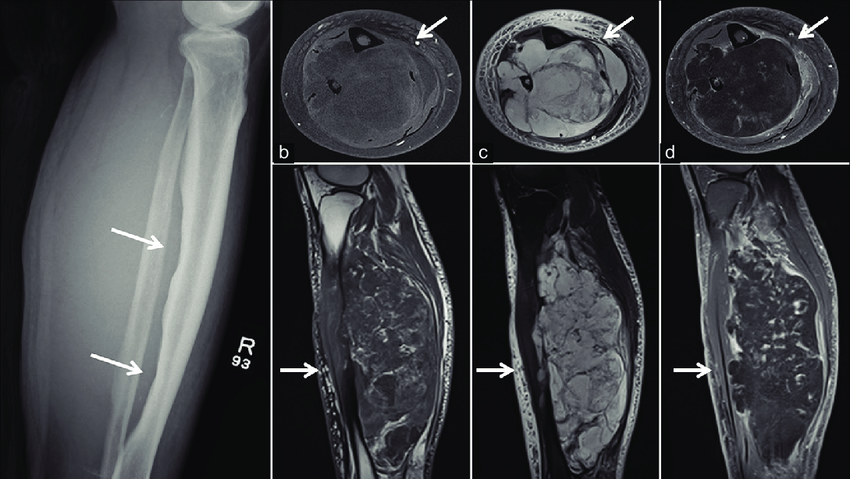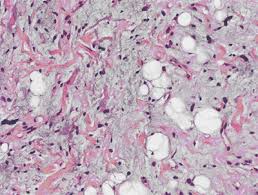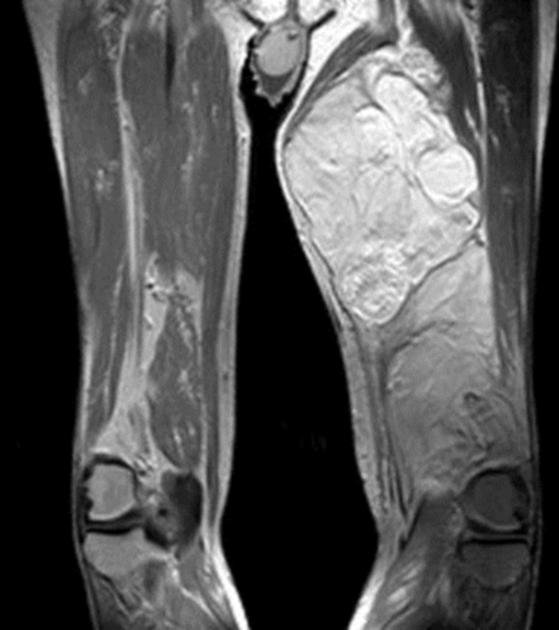
1. Understanding Liposarcoma
Liposarcoma is a malignant tumor that arises from adipose (fat) tissue. The tumor can grow anywhere in the body, but it is most commonly found in the retroperitoneum (the area behind the abdomen), the thighs, or the arms. Liposarcomas are classified into several subtypes based on their histological appearance. These subtypes include:
- Well-differentiated liposarcoma: A slow-growing tumor that resembles normal fat cells but has genetic mutations that allow it to proliferate uncontrollably.
- Dedifferentiated liposarcoma: A more aggressive form that develops from a well-differentiated liposarcoma and features cells that resemble other types of soft tissue sarcomas.
- Myxoid liposarcoma: A subtype characterized by a gelatinous or mucoid appearance, and it often has a better prognosis than other types.
- Pleomorphic liposarcoma: A rare, highly aggressive form of liposarcoma with irregularly shaped cells.
Liposarcomas tend to occur in adults, with the average age of diagnosis being between 50 and 65 years old. While they are generally considered rare, liposarcomas are one of the most common soft tissue sarcomas, accounting for about 20% of all soft tissue sarcoma cases.
2. The Importance of Surgery in Liposarcoma Treatment
Surgical resection is considered the most effective treatment option for liposarcoma, particularly for localized tumors. The goal of surgery is to completely remove the tumor with clear margins, meaning there is no cancerous tissue left behind. Achieving clear surgical margins is essential in reducing the likelihood of recurrence. In fact, surgery alone is often sufficient for well-differentiated and low-grade liposarcomas, with patients having a good long-term prognosis after complete surgical excision.
2.1 Tumor Location and Surgical Challenges

The success of surgical treatment in liposarcoma largely depends on the tumor’s location, size, and involvement with surrounding structures. Liposarcomas found in the limbs or superficial tissues tend to be easier to remove surgically due to their accessibility. However, tumors located deep within the body, such as those in the retroperitoneum or near vital organs, present significant challenges.
For example, retroperitoneal liposarcomas can be particularly difficult to excise because of their proximity to important structures like the kidneys, liver, intestines, and major blood vessels. In these cases, the surgeon may need to remove a portion of nearby organs or tissues to ensure the complete removal of the tumor.
Additionally, large or deeply embedded liposarcomas may require more extensive surgical procedures, which come with increased risks, including blood loss, infection, and damage to surrounding tissues. The surgical team may also face challenges in achieving clear margins, which is essential for reducing the risk of recurrence.
2.2 Surgical Margins and Recurrence
A key factor in the success of liposarcoma surgery is achieving negative (clear) surgical margins. This means that no cancer cells remain at the edges of the tissue that was removed. Achieving clear margins significantly reduces the likelihood of recurrence. Incomplete excision or positive surgical margins—where cancerous cells are found at the edge of the resected tissue—can lead to local recurrence of the tumor, which may require further surgery or additional treatments.
Liposarcomas are known to have a high rate of recurrence, particularly in high-grade and dedifferentiated forms. Tumors that are not fully excised may regrow or spread to other parts of the body, complicating the patient’s treatment and prognosis.
3. Types of Surgery Used in Liposarcoma Treatment
The type of surgery performed for liposarcoma depends on the tumor’s location, size, and grade. Some of the main types of surgical procedures used in the treatment of liposarcoma include:
3.1 Wide Local Excision

Wide local excision is the most common surgical procedure for liposarcoma. This surgery involves the removal of the tumor along with a margin of healthy tissue around it to ensure that no cancerous cells remain. The goal of this surgery is to remove the tumor entirely while preserving the function of surrounding tissues and organs as much as possible.
If the tumor is located in an accessible area, such as the limbs or superficial tissues, wide local excision can often be performed with good outcomes. However, for tumors in more complex locations, the surgical team may need to take a more aggressive approach.
3.2 Limb-Sparing Surgery
For liposarcomas that occur in the limbs, limb-sparing surgery may be performed to remove the tumor while preserving the function of the affected limb. This procedure is especially important for patients who wish to retain the use of their limb post-surgery. Limb-sparing surgery can be challenging if the tumor is large or located near critical structures like nerves or blood vessels.
In cases where limb preservation is not possible, amputation may be necessary to remove the tumor completely.
3.3 Retroperitoneal Surgery
Liposarcomas in the retroperitoneum (the area behind the abdominal cavity) are notoriously difficult to treat because of their proximity to vital organs and blood vessels. Retroperitoneal surgery often requires a multidisciplinary approach, involving a team of surgeons, including those specialized in abdominal surgery, vascular surgery, and urology.
Surgical removal of retroperitoneal liposarcomas may involve the resection of surrounding tissues and organs, such as parts of the intestine, kidneys, or blood vessels. This type of surgery is typically more invasive and carries a higher risk of complications than surgery for more accessible tumors.
3.4 Reconstructive Surgery
Following the excision of large liposarcomas or tumors in critical areas, reconstructive surgery may be required to restore function and appearance. For example, if the surgery involves removing muscle or skin from the limbs or torso, reconstructive techniques like skin grafts or muscle flaps may be used to close the surgical site and restore tissue integrity.
Reconstructive surgery also plays an essential role in improving the patient’s quality of life post-surgery, particularly in cases where the tumor has affected areas like the face, limbs, or abdomen.
4. Adjuvant Therapies After Surgery
In addition to surgery, adjuvant therapies such as radiation therapy and chemotherapy may be recommended to reduce the risk of recurrence and treat any remaining cancer cells.
4.1 Radiation Therapy
Radiation therapy is commonly used after surgery, particularly if the surgical margins are close or if there is a risk of recurrence. Radiation can be directed at the tumor site to kill any remaining cancer cells that were not removed during surgery. This is particularly effective for liposarcomas located in areas that are difficult to access surgically, such as the retroperitoneum or deep tissues.
4.2 Chemotherapy
Chemotherapy is less commonly used for liposarcoma, as these tumors are often resistant to standard chemotherapy regimens. However, in cases where the tumor is high-grade, recurrent, or metastatic, chemotherapy may be employed. Drugs like doxorubicin and ifosfamide are commonly used to treat liposarcoma, though the response to chemotherapy can be variable.
5. Prognosis and Outcomes
The prognosis for patients with liposarcoma varies depending on the tumor’s grade, size, location, and surgical resectability. In general, patients with low-grade liposarcomas that are completely excised with clear margins have a good prognosis, with many patients achieving long-term survival. However, high-grade liposarcomas or tumors that are not completely resected may have a higher risk of recurrence and metastasis, affecting the patient’s long-term outlook.
Even for high-grade tumors, surgery remains the cornerstone of treatment, offering the best chance for survival. The role of adjuvant therapies and close monitoring post-surgery is also critical in managing recurrence and improving outcomes.
Surgical intervention is the most important treatment modality for liposarcoma, offering the best chance for complete tumor removal and improved survival. However, liposarcoma is a complex and heterogeneous disease, and surgery presents many challenges, particularly in cases where the tumor is large, deeply embedded, or located near vital structures. Achieving clear surgical margins is key to reducing the risk of recurrence, but patients may also require additional treatments, including radiation therapy and chemotherapy, to improve outcomes.
